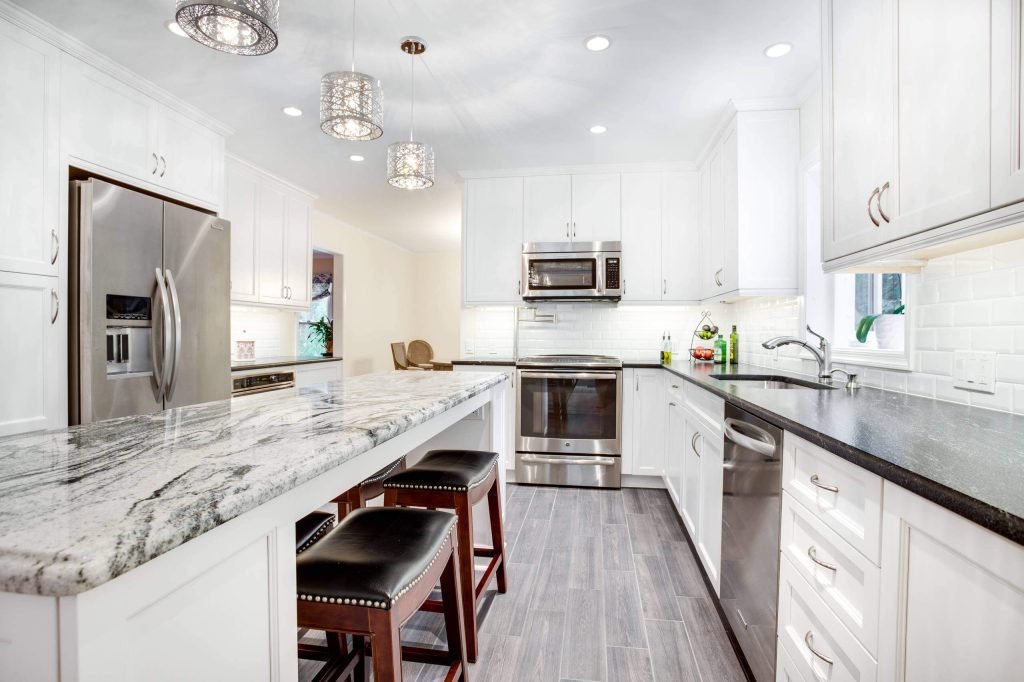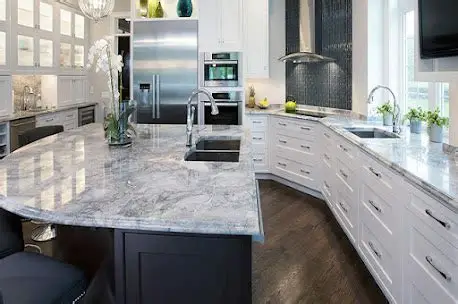
Granite is widely recognized for its diverse color palette, ranging from bold blacks to soft whites and everything in between.
Granite is widely recognized for its diverse color palette, ranging from bold blacks to soft whites and everything in between. One of the most sought-after types is light-colored granite, especially for interior design applications like kitchen countertops and bathroom vanities. But what exactly gives granite its lighter hues?
In this comprehensive guide, we’ll explore which mineral features directly contribute to granite’s light color, how it affects design choices, and what this means for selecting the right slab for your home or commercial project.

Understanding Granite’s Color Origin
What Is Granite?
Granite is a coarse-grained igneous rock primarily made up of quartz, feldspar, and mica. It forms beneath the Earth’s surface as molten rock cools slowly, allowing crystals to grow large enough to be seen with the naked eye.
For more detail: What is granite made of?

Key Minerals in Granite: Light vs. Dark
Granite’s coloration depends heavily on its mineral composition. Here are the main players:
1. Feldspar (Light-Colored Mineral)
- Types: Orthoclase and plagioclase
- Color Range: White, pink, gray
- Impact on Color: The primary contributor to granite’s light tone
2. Quartz (Translucent to Light Gray)
- Appearance: Glassy and colorless to milky white
- Contribution: Enhances brightness and contrast
3. Mica (Dark Mineral)
- Types: Biotite (black), muscovite (silvery)
- Impact: Adds dark flecks or shimmer
4. Amphibole and Hornblende (Dark)
- Found in small amounts, these contribute darker tones
💡 Conclusion: The high concentration of feldspar and quartz in granite directly results in lighter-colored granite stones.
Why Light Granite Is Popular
Visual Appeal
- Brightens up kitchens and bathrooms
- Complements both modern and rustic styles
Popular Choices
- White granite countertops
- Cream, beige, and light gray granite slabs
Light Granite in Design
- What Are the Most Popular Edges for Granite Countertops?
- Granite Countertops Edges: Which to Choose?
Natural vs. Engineered Light Granite
Natural Light Granite
- Contains natural quartz and feldspar
- Unique veining and subtle color variations
- Requires periodic sealing
Engineered Light Granite
- Uniform color from pigments and resins
- Lower maintenance but less unique
Granite Care and Maintenance
Cleaning Tips
- Use pH-neutral granite cleaners
- Avoid harsh chemicals
Sealing
- Necessary to maintain color and prevent staining
Repairs
- Countertop fabricator services can fix chips and restore polish
Granite and Water Absorption
Did you know mineral content also affects water interaction?
Explore: Which layer will become saturated first when rain falls?
Quartz and feldspar, being low-absorption minerals, help maintain granite’s integrity in wet conditions.
Aardwolf Granite Collections and Solutions
Aardwolf offers a range of premium light granite slabs:
- Aardwolf white granite
- Aardwolf beige and gray granite colors
- Aardwolf granite installation services
Also available:
- Wholesale granite options
- Budget and high-end slab varieties
- Full support for custom countertops
Conclusion: Light Color = High Feldspar + Quartz Content
So, which feature directly contributes to granite’s light color?
The answer lies in the abundance of light-colored minerals, especially feldspar and quartz. These components dominate the composition of light granite and define its aesthetic, making it a top choice for both residential and commercial design.
Whether you’re seeking a luminous kitchen island or an elegant bathroom vanity, understanding the mineral makeup of granite empowers you to choose the perfect stone for durability and visual harmony.

